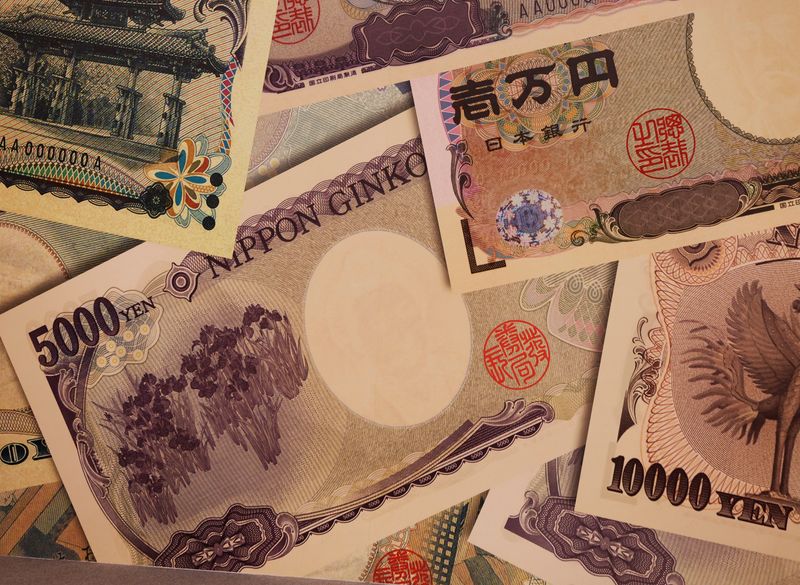Dollar soft, yen strong as bets firm on aggressive Fed rate cut
By Vidya Ranganathan and Samuel Indyk
LONDON (Reuters) -The dollar was lower on Monday while the yen hit its highest level in more than a year, as market participants increasingly expected an oversized rate cut by the Federal Reserve later this week.
The dollar traded at 140.01 yen at 1140 GMT, after falling to as low as 139.58 yen in the session.
This represented a further drop from the 140.285 end-December low it struck on Friday to levels last seen in July 2023.
The Fed's Sept. 17-18 meeting is the highlight of a busy week that also has the Bank of England and Bank of Japan announcing policy decisions on Thursday and Friday, respectively.
Fed speakers and data releases over the past month have had markets shifting the odds around the size of this week's rate cut, debating whether the Fed will head off weakness in the labour market with aggressive cuts or take a slower wait-and-see approach.
Futures markets were fully pricing a quarter-point cut from the Fed on Wednesday, with around a 60% chance they opt for a larger 50 basis point move. Last week, the chances of a larger move stood at about 15%.
"It's all about the Fed and the question about whether it will be a big 50 basis point cut or a smaller 25 basis one," said Niels Christensen, chief analyst at Nordea. "That's why the dollar is softer across the board."
The dollar index , which measures the currency against six peers, was down 0.3% to 100.69.
Treasury yields have been falling in the run-up to the highly anticipated Fed meeting, particularly as odds stack up for the Fed to get aggressive with a half-point rate cut.
Benchmark 10-year yields are down 30 basis points in about two weeks. Two-year yields, more closely linked to monetary policy expectations, were around 3.55% and down from roughly 3.94% two weeks ago.
Selling the dollar for yen has been the cleanest trade for investors looking to play the drop in Treasury yields, said Chris Weston, head of research at Australian online broker Pepperstone.
"While speculators are short and riding this lower, this trend is clearly one to align with," he said.
Investors are also looking to the Bank of Japan's interest rate decision on Friday, when it is expected to keep its short-term policy rate target steady at 0.25%, having raised rates twice already this year.
BOJ board members have indicated they are keen to see rates higher, and the narrowing gap between rates in Japan and other major currencies has spurred the yen higher and caused billions of dollars worth of yen-funded carry trades to be unwound.
"We are expecting higher rates in Japan and lower rates in the U.S., so the interest rate differential is favouring a stronger yen against the dollar," Nordea's Christensen said.
Sterling rose 0.6% to $1.3199. The euro was up 0.4% at $1.1120.
The European Central Bank cut interest rates by 25 bps last week, but ECB President Christine Lagarde dampened expectations for another reduction in borrowing costs next month.
The ECB should almost certainly wait until December before cutting interest rates again to be certain it is not making a policy mistake in easing too quickly, ECB Governing Council member Peter Kazimir said on Monday.
The Bank of England is expected to hold its key interest rate at 5% on Thursday, after kicking off its easing with a 25-bp reduction in August. Futures markets were pricing in around a 38% chance of a quarter-point rate cut on Thursday, versus a 20% chance on Friday.
Bank of Canada Governor Tiff Macklem meanwhile opened the door to stepping up the pace of interest rate cuts, the Financial Times reported on Sunday. The BoC, after keeping its key policy rate at 5%, a more than two-decade high, for a year, has trimmed it by a quarter point three times in a row since June.
The U.S. dollar was little changed against its Canadian counterpart at C$1.3581.
Source: Investing.com
